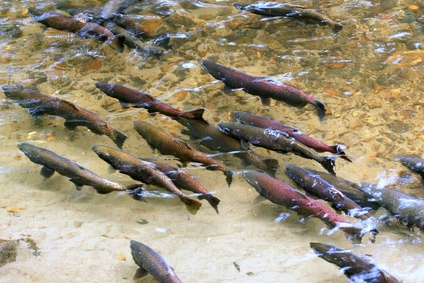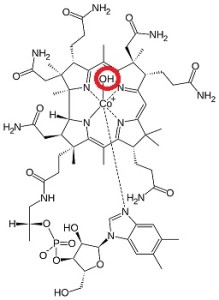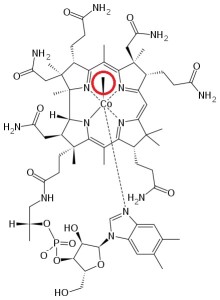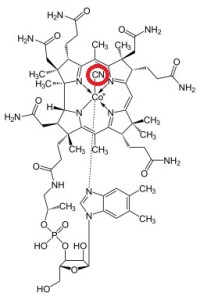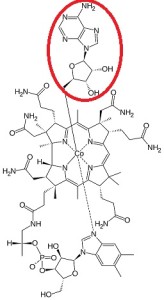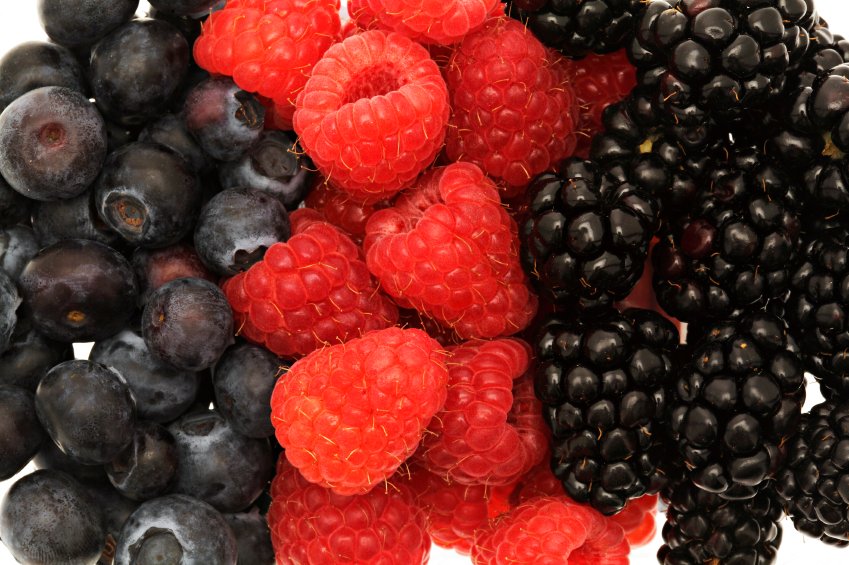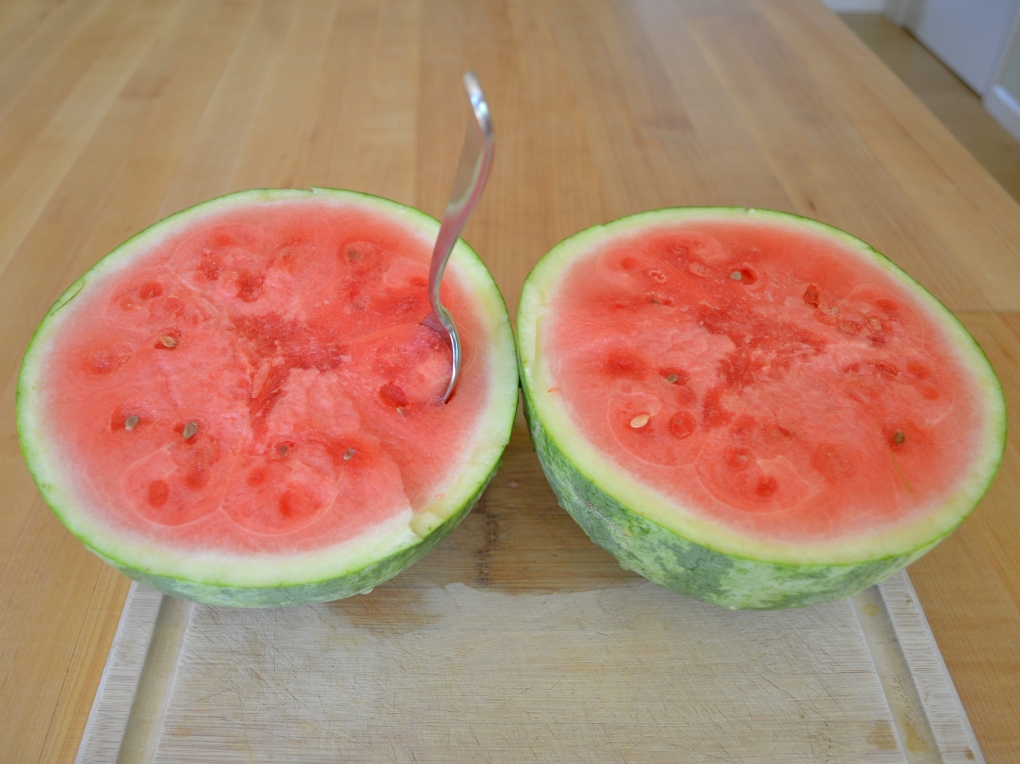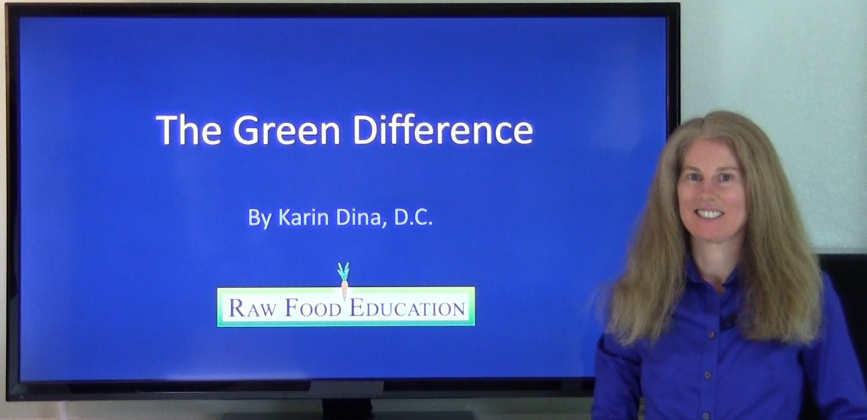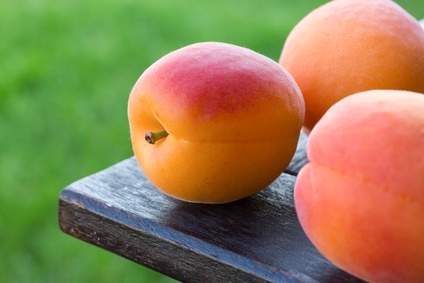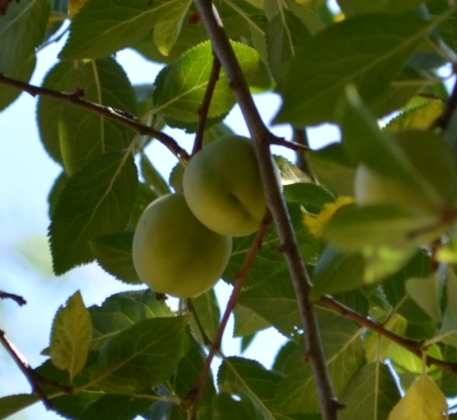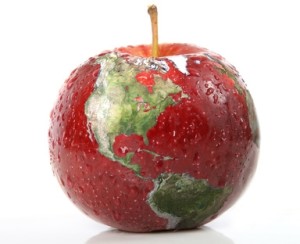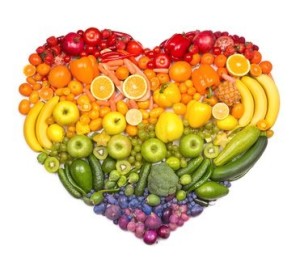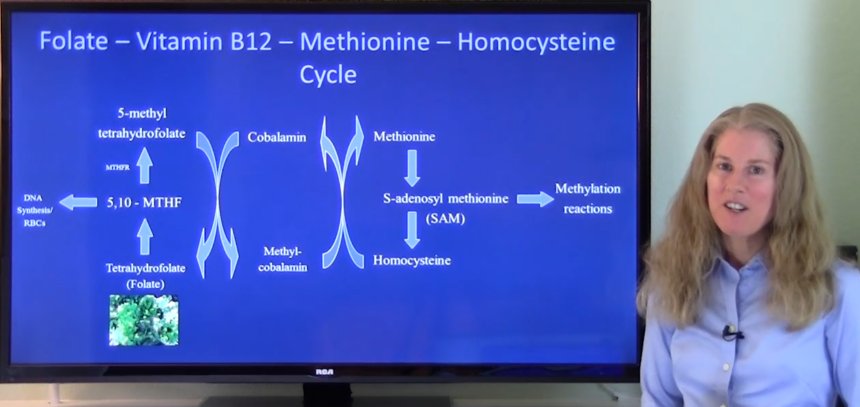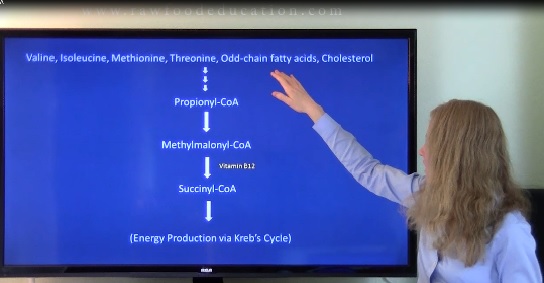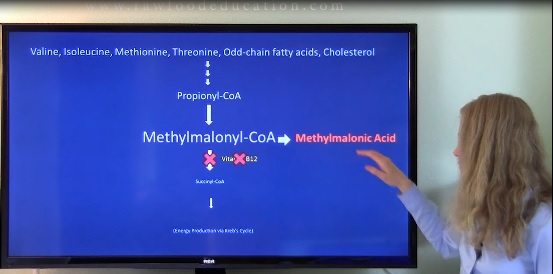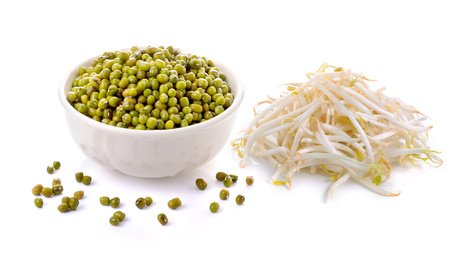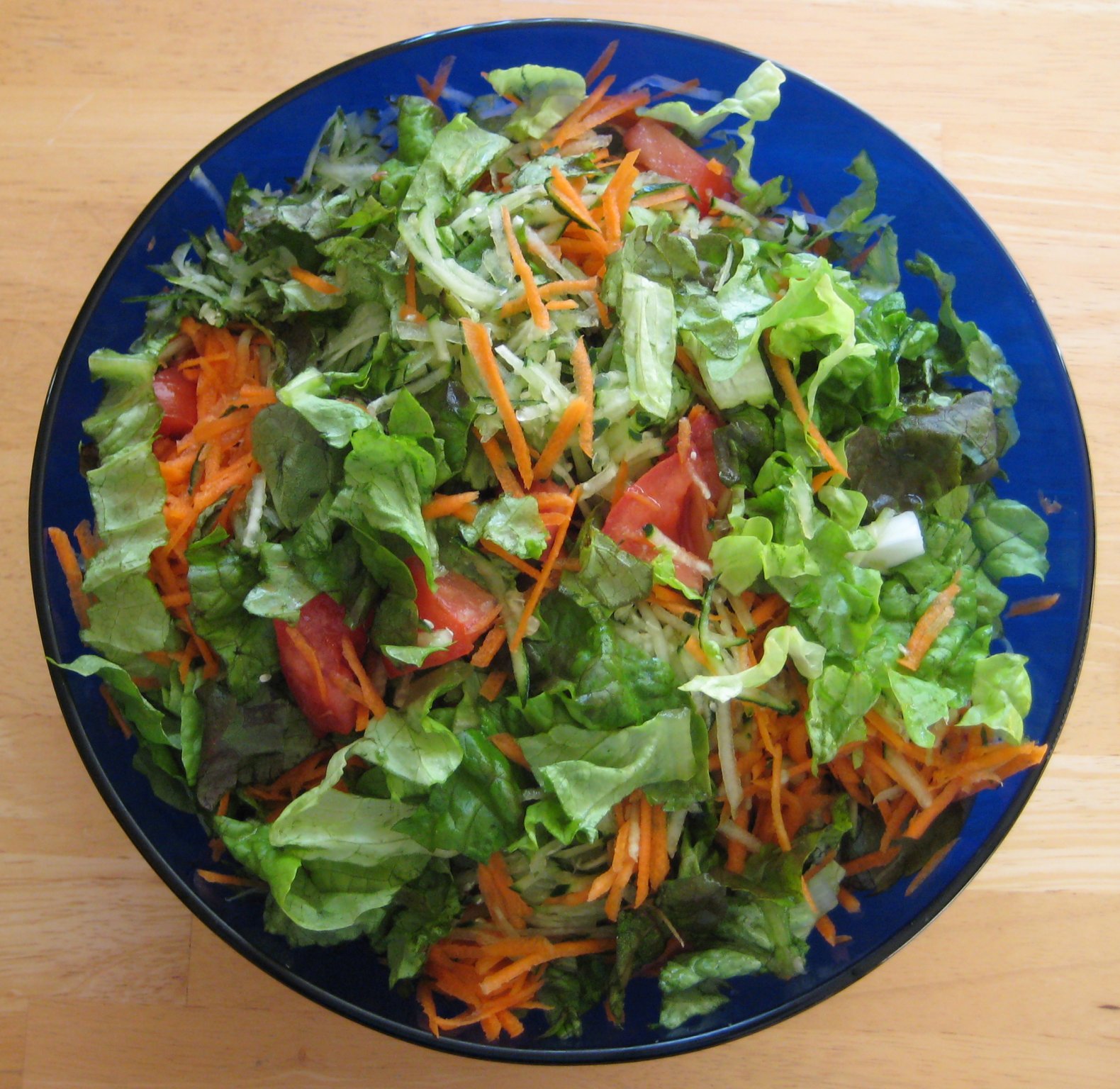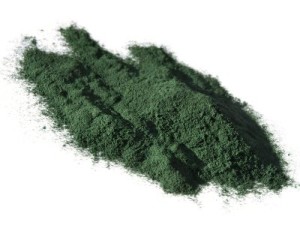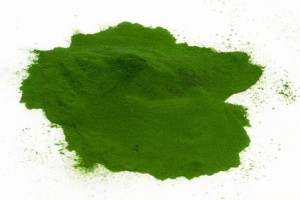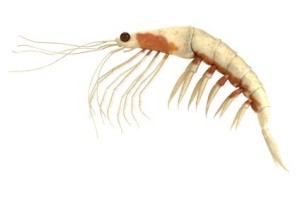 In recent years, vitamin D has become one of the most discussed nutrients in the health community. It is also one of the most complicated and controversial of the nutrients, especially when it comes to supplementation and plant-based diets.
In recent years, vitamin D has become one of the most discussed nutrients in the health community. It is also one of the most complicated and controversial of the nutrients, especially when it comes to supplementation and plant-based diets.
There are two supplemental forms of vitamin D: vitamin D2 and vitamin D3. Vitamin D2, also known as ergocalciferol, has historically been thought of as the vegan form of vitamin D. On the other hand, vitamin D3, also known as cholecalciferol, has historically been considered a non-vegan form of vitamin D. Vitamin D2 supplements have traditionally been made from mushrooms. Exposure of ergosterol in these fungi to UVB light rays (ultraviolet B spectrum rays of the sun) leads to the production of vitamin D2. Conversely, vitamin D3 supplements have been made from lanolin found in sheep’s wool. Exposure of 7-dehydrocholesterol in lanolin to UVB rays leads to the formation of vitamin D3, similar to how vitamin D3 is produced in our skin.
 Research is mixed on which supplement is more reliably effective at raising our vitamin D levels. Much of this research has indicated that the D3 form of vitamin D is more effective at raising blood levels of vitamin D than D2, however some indicates the two can be equivalent. Many vegans have expressed concern to us about this, since they have found their vitamin D2 supplements are not giving them the results they are seeking. Consequently, some have considered using a D3 supplement to raise their vitamin D to desired levels. Where does this leave someone who wants to stay true to their vegan lifestyle and ethics? Fortunately in recent years, several supplement companies have formulated supplements with vitamin D3 sourced from lichen. What is lichen? It is an organism composed of some type of fungus and algae, or cyanobacteria in some cases, living together symbiotically. Lichen is often found growing on tree branches and rocks and can have a pale green to gray or mushroom color, as well as others. Does this mean that we should eat lichen to get our vitamin D? No, many species of lichen are not edible, so it would be best to stick with a supplement. But the good news is that a vegan vitamin D3 supplement does now exist and various supplement companies are offering it as an alternative to lanolin-sourced D3!
Research is mixed on which supplement is more reliably effective at raising our vitamin D levels. Much of this research has indicated that the D3 form of vitamin D is more effective at raising blood levels of vitamin D than D2, however some indicates the two can be equivalent. Many vegans have expressed concern to us about this, since they have found their vitamin D2 supplements are not giving them the results they are seeking. Consequently, some have considered using a D3 supplement to raise their vitamin D to desired levels. Where does this leave someone who wants to stay true to their vegan lifestyle and ethics? Fortunately in recent years, several supplement companies have formulated supplements with vitamin D3 sourced from lichen. What is lichen? It is an organism composed of some type of fungus and algae, or cyanobacteria in some cases, living together symbiotically. Lichen is often found growing on tree branches and rocks and can have a pale green to gray or mushroom color, as well as others. Does this mean that we should eat lichen to get our vitamin D? No, many species of lichen are not edible, so it would be best to stick with a supplement. But the good news is that a vegan vitamin D3 supplement does now exist and various supplement companies are offering it as an alternative to lanolin-sourced D3!
Interested in taking your knowledge to the next level? We cover this topic and so much more in our online Mastering Raw Food Nutrition and Educator Course. For more class details, click here.
One of the best ways to keep in touch with us is to join our email list. You’ll receive a free copy of Our Top 12 Strategies for Long Term Success on A Raw Plant-Based Diet eBook along with regular information about raw food and plant-based diets and periodic promotions for our classes, events, and other offerings!
Where does DHA come from?
We hope your summer has been going well! We’ve been doing quite a bit of research lately on a variety of raw food nutrition related topics in preparation for our Mastering Raw Food Nutrition and Educator Course beginning in early September.
One thing we really enjoy doing in our classes is dispelling nutritional myths. Here’s a great example. You’ve probably heard that cold water fish and fish oil contain an omega 3 fat called DHA. Numerous educators, authors, and doctors have said that fish, or fish oil, are the sole sources of DHA.
What many people don’t realize is that DHA is produced much lower on the cold water aquatic food chain by certain types of algae. Fish and other marine animals obtain their DHA when they eat this DHA containing algae. This is how DHA progresses up the aquatic food chain.
DHA plays many important roles in the human body, including brain function. It is a super-unsaturated fat that contains 6 double bonds. These double bonds on the one hand allow DHA to conduct the electrical activity needed for brain function, while on the other hand these same 6 double bonds make DHA very susceptible to oxidation. Oxidation is another name for free radical damage.
DHA therefore is generally only made by organisms when they need it, or when metabolic conditions are favorable. The 6 double bonds in DHA make it very fluid and flexible and confers to it protection from freezing. This is why we see DHA in cold water aquatic organisms, such as salmon, krill, and certain types of cold water algae, but not in warm water aquatic organisms who do not need protection from freezing.
The human body makes DHA rather easily when nutritional and metabolic conditions are favorable. We know omega 3 conversion is a controversial topic, yet is one of our favorites. We love discussing our research and clinical experience with vegans and raw vegans regarding DHA, and so much else.
If you're interested in taking your knowledge to the next level.........
We cover this topic and so much more in our online Mastering Raw Food Nutrition and Educator Course. For more class details, click here.
One of the best ways to keep in touch with us is to join our email list. You’ll receive a free copy of Our Top 12 Strategies for Long Term Success on A Raw Plant-Based Diet eBook along with regular information about raw food and plant-based diets and periodic promotions for our classes, events, and other offerings!
What are the different forms of vitamin B12?
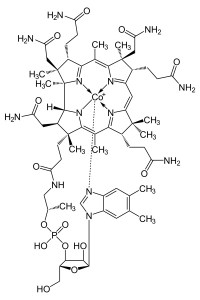 Over the years, people have asked me about the differences between the available supplemental forms of vitamin B12. What are they? Do they occur in nature or are they made in a laboratory? Do some forms work “better” than others?
Over the years, people have asked me about the differences between the available supplemental forms of vitamin B12. What are they? Do they occur in nature or are they made in a laboratory? Do some forms work “better” than others?
The scientific name for vitamin B12, cobalamin, is derived from the element cobalt found at the center of the vitamin B12 molecule. There are several different forms of vitamin B12, each named for the chemical group attached to cobalt, including hydroxocobalamin, methylcobalamin, cyanocobalamin, and adenosylcobalamin. I have seen these forms of B12 available as individual supplements or in multivitamin formulas.
Hydroxocobalamin
Hydroxocobalamin is a naturally-occurring form of vitamin B12, as it is made by certain bacteria including some strains that live in soil. Not all types of bacteria make vitamin B12 and not all soil contains B12 producing bacteria. Yeast, mushrooms and other types of fungus do not produce vitamin B12, neither do animals nor plants.
Hydroxocobalamin is NOT active in the human body; it requires conversion to a human bioactive form. Hydroxocobalamin has an –OH (hydroxy) group attached to cobalt in the center of the vitamin B12 molecule. To activate this form of B12, the human body removes the –OH group and replaces it with, for example, a methyl (–CH3) group to create the human bioactive form of vitamin B12, methylcobalamin.
Methylcobalamin
Methylcobalamin is a form of vitamin B12 that is involved in methylation reactions in the human body. Another of my videos covers the importance of methylation and the role played by this form of vitamin B12, so I would encourage you to view it for further explanation. Dr. Rick and I have used methylcobalamin for many years and find it to be a reliable form of B12 for our needs. We especially like this form of vitamin B12 because it is a human bioactive form and does not require conversion.
Cyanocobalamin
Cyanocobalamin is a synthetic form of B12 made exclusively in a laboratory. It is not a human bioactive form of vitamin B12 and is not made by bacteria in nature. Cyanocobalamin has a –CN (cyano) group attached to cobalt in the center of the vitamin B12 molecule. Many people have expressed concern about this cyano group as being problematic or toxic, but I have yet to see research or clinical data indicating the use of cyanocobalamin as being associated with these types of issues. When one expresses concern to me, I suggest the use of another supplemental form. As mentioned earlier, I have been using methylcobalamin for many years with good results. If someone is not getting the results they want from their vitamin B12 supplement, clinically or otherwise, I suggest that they contact a qualified healthcare provider to help them find the solution that works best for them.
Despite this controversy, cyanocobalamin is one of the most popular supplemental forms of vitamin B12 because of its stability and shelf-life. For example, cyanocobalamin has a longer shelf-life than methylcobalamin, so supplement manufacturers like to produce and sell it. Since cyanocobalamin is not human bioactive, our body must convert it to one of the human bioactive forms. In which case, the body must remove the –CN group and replace it with either a methyl group or an adenosyl group.
Adenosylcobalamin
Like methylcobalamin, adenosylcobalamin is one of the human bioactive forms of vitamin B12. This is the form of vitamin B12 that can be stored by our body, specifically in our liver. All previously discussed forms of B12 can be converted into adenosylcabalamin for storage, when our body has more vitamin B12 than is needed for body function.
Adenosylcobalamin is also very important for energy-producing reactions in the human body, as are various other B vitamins. Additionally, adenosylcobalamin is responsible for keeping methylmalonic acid levels appropriately low in the human body. I have a recent video and article describing the significance of methylmalonic acid and its conversion by adenosylcobalamin in the human body, and would encourage you to view it for more information.
Interested in taking your vitamin B12 and nutrition knowledge to the next level? We cover this topic and so much more in our online Mastering Raw Food Nutrition and Educator Course. For more class details, click here.
Additionally, our book The Raw Food Nutrition Handbook: An Essential Guide to Understanding Raw Food Diets addresses many hot topics in raw food nutrition such as vitamin D, essential fats, protein, nutrient content of raw food diets, food combining, enzymes, hydration, vitamins, minerals, and many more. We value education on these important topics and are happy to finally bring this book to you. The book is available on Amazon and other online booksellers.
One of the best ways to keep in touch with us is to join our email list. You’ll receive a free copy of Our Top 12 Strategies for Long Term Success on A Raw Plant-Based Diet eBook along with regular information about raw food and plant-based diets and periodic promotions for our classes, events, and other offerings!
What do fruits and vegetables have in common with fall foliage?
One answer is very simple: antioxidants. Xanthophylls and carotenoids are two types of antioxidants found in fruits, vegetables, and fall foliage.
Regarding fruits and vegetables, xanthophylls are yellow plant pigments found in these foods and leafy greens. Well-known xanthophylls include lutein and zeaxanthin which have been studied for potential benefits in human vision. Carotenoids are orange plant pigments found in some leafy greens and orange fruits and vegetables. Well-known carotenoids include beta carotene and alpha carotene.
Regarding leaves on trees, xanthophylls and carotenoids are present in leaves for the entire life cycle and are only revealed when chlorophyll production ceases toward the end of this cycle, which happens on a large scale in the fall. Chlorophyll is a green pigment that plays a role in creating energy for green plants from sunlight through a process called photosynthesis. Chlorophyll breaks down with exposure to sunlight throughout the life cycle of leaves and therefore constantly has to be replaced. As autumn approaches and a leaf approaches the end of its life, chlorophyll is no longer replaced by the plant, revealing the xanthophylls and/or carotenoids underneath.
In addition to yellow and orange pigments, we see red pigments called anthocyanins in some fall foliage. Other anthocyanins are purple and blue in color and are found in blueberries, raspberries, and blackberries. In contrast to xanthophylls and carotenoids, anthocyanins are not present throughout the life of the leaf, but instead are made at the end of the life cycle when chlorophyll production ceases. Not all leaves contain anthocyanins.
To summarize, xanthophylls, carotenoids, and anthocyanins are groups of antioxidants found in both fall foliage and fruits and vegetables. All three types of phytonutrients help protect the leaves of trees from stresses such as constant sun exposure which can generate free radicals. This is especially true for xanthophylls and carotenoids as they are present for the entire life cycle of the leaf. Similarly, the xanthophylls, carotenoids, and anthocyanins we eat from fruits and vegetables are thought to help protect our internal tissues from the free radicals to which they are exposed.
What about the brown pigment seen in some fall foliage? This pigment is called tannin and is revealed when chlorophyll, xanthophylls, carotenoids, and anthocyanins break down near the end of the leaf life cycle.
Interested in taking your nutrition knowledge to the next level?
We cover this topic and so much more in our online Mastering Raw Food Nutrition and Educator Course. For more class details, click here.
Additionally, our book The Raw Food Nutrition Handbook: An Essential Guide to Understanding Raw Food Diets addresses many hot topics in raw food nutrition such as essential fats, protein, nutrient content of raw food diets, food combining, enzymes, hydration, vitamins, minerals, and many more. We value education on these important topics and are happy to finally bring this book to you. The book is available on Amazon and other online booksellers.
One of the best ways to keep in touch with us is to join our email list. You’ll receive a free copy of Our Top 12 Strategies for Long Term Success on A Raw Plant-Based Diet eBook along with regular information about raw food and plant-based diets and periodic promotions for our classes, events, and other offerings!
We love watermelon, but what about the seeds?
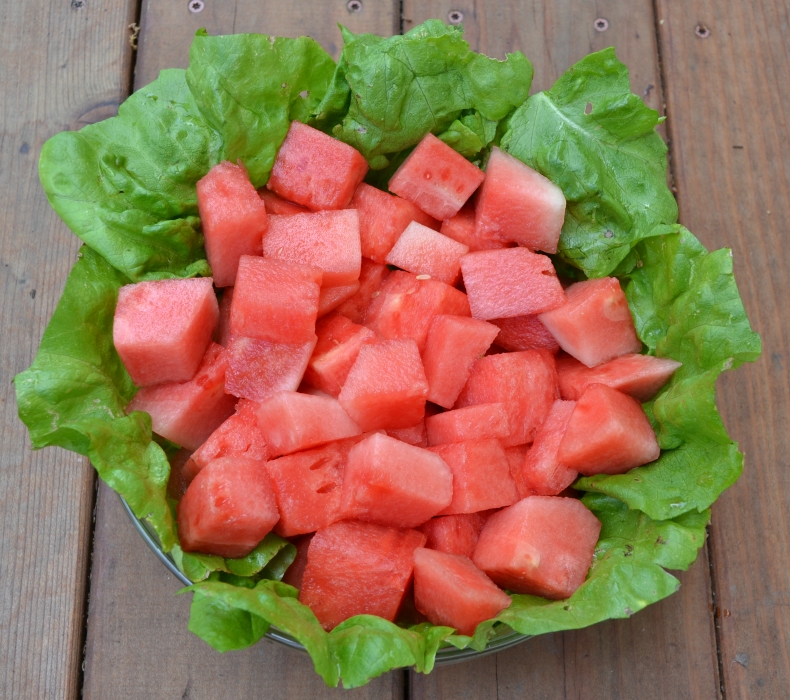 Watermelon season is here! For me, watermelon is totally synonymous with summer fun and enjoying it often brings me to another time and place. My childhood memories of watermelon-soaked backyard gatherings, pool parties, and beach parties abound. In fact, I am eating a watermelon as I am writing this!
Watermelon season is here! For me, watermelon is totally synonymous with summer fun and enjoying it often brings me to another time and place. My childhood memories of watermelon-soaked backyard gatherings, pool parties, and beach parties abound. In fact, I am eating a watermelon as I am writing this!
When I became interested in raw food 25 years ago, watermelon became an actual food for me, rather than a dessert. And just like at summer gatherings, back then I would remove the seeds from the watermelon before eating. Ever heard that old wives' tale that if you eat watermelon seeds they will sprout in your body? Well, we all know that doesn’t happen, but I did grow up thinking watermelon seeds were to be removed before eating the melon.
It wasn’t until college that I learned that those little white watermelon seeds were actually edible. Watermelon is in the cucumber plant family (Cucurbitaceae), along with summer squash, zucchini, winter squash varieties, pumpkin, and other melons such as honeydew and cantaloupe. Pumpkin seeds are famous for their zinc content, so what about watermelon seeds?
Two tablespoons of shelled dry watermelon seeds contain 1.4 mg of zinc, along with 1 mg of iron, 70 mg of magnesium, and more. For only 75 calories, the iron, zinc, and magnesium content of these seeds is excellent. When compared to a similar measure of pumpkin seeds, the zinc content is similar.
| Watermelon seeds – Two tablespoons | Pumpkin seeds – Two tablespoons | Adult DRI | |
| Calories | 75 | 93 | |
| Magnesium | 70 | 92 | 310 – 320 mg for women, 400 – 420 mg for men |
| Iron | 1.0 | 2.6 | 8 mg for men and postmenopausal women, 18 mg for premenopausal women |
| Zinc | 1.4 | 1.3 | 8 mg for women, 11 mg for men |
Most watermelons these days are seedless, but now when I come across the occasional white seed, I eat it along with the watermelon flesh. I do not eat the black seeds largely because I rarely find them. When I do find them, I compost them simply because I do not enjoy their flavor.
What about watermelon itself? Isn’t it controversial for some reason?
To make it easy for people to find reliable information on watermelon and other fruits, the glycemic index, glycemic load, fructose, glucose, and carbohydrates in general, we dedicated a chapter in our book, The Raw Food Nutrition Handbook: An Essential Guide to Understanding Raw Food Diets to answering many common carbohydrate questions.
In the book we also cover other hot topics in raw food nutrition such as essential fats, protein, nutrient content of raw food diets, food combining, enzymes, hydration, vitamins, minerals, and many more. We value education on these important topics and are happy to finally bring this book to you. The book is available on Amazon and other online booksellers.
One of the best ways to keep in touch with us is to join our email list. You’ll receive a free copy of Our Top 12 Strategies for Long Term Success on A Raw Plant-Based Diet eBook along with regular information about raw food and plant-based diets and periodic promotions for our classes, events, and other offerings!
The Green Difference – Five Reasons why Leafy Greens are Important on a Raw Food Diet
Ever since my introduction to raw food 25 years ago, I noticed that there are at any given time a number of raw food enthusiasts who choose to limit their intake of vegetables, especially leafy greens, for various reasons. From my own research, clinical and personal experience, I have found that leaving out these important foods decreases the amounts of important nutrients in one’s diet.
In a recent video I show the content of selected important nutrients in three different smoothies: a fruit smoothie, the same fruit smoothie with dandelion greens added, and the same fruit smoothie with kale added. The nutrient differences between the non-green smoothie and the green smoothies are astonishing, especially for calcium and iron. Here is a chart summarizing the differences:
| Fruit Smoothie | Fruit smoothie plus dandelion greens | Fruit smoothie plus kale | DRI | |
| Calories | 436 | 510 | 536 | |
| Calcium | 110 | 418 | 381 | 1000 mg, 1200 mg |
| Iron | 2.0 | 7.0 | 5.4 | 8 mg, 18 mg |
| Magnesium | 118 | 177 | 136 | 310 mg, 420 mg |
| Potassium | 1484 | 2139 | 2382 | 4700 mg |
| Folate | 157 | 202 | 216 | 400 mcg |
Fruit smoothie recipe:
- One Valencia orange
- Two bananas
- 2 cups pineapple chunks
- ½ cup blueberries
- ½ cup strawberries
- ¼ cup blackberries
Fruit smoothie plus dandelion greens: the ingredients in fruit smoothie with 3 cups of dandelion greens added
Fruit smoothie plus kale: the ingredients in fruit smoothie with 3 cups of chopped kale added
Calcium and Iron: The dandelion greens and kale increase the content of all nutrients listed in the table significantly, especially iron and calcium. The amounts of calcium and iron in the fruit smoothie alone are a good start, but when leafy greens are added, the amounts of these important minerals increase dramatically. Per calorie, the green smoothies are a great value calcium and iron-wise and go a long way in helping to provide the adult DRIs (Dietary Referenced Intakes) for these important nutrients. Without leafy greens, one would be missing out on these nutrients and the health value they provide.
Magnesium: Leafy greens are a reliable source of magnesium because of their chlorophyll content. Chlorophyll is the green coloring that one finds green plants, especially in leaves. The mineral at the center of the chlorophyll molecule is magnesium, so it is not surprising to see that the magnesium content of this smoothie notably increased when leafy greens were added.
Folate: Also known as vitamin B9, folate got its name from the Latin word for foliage, which makes sense given that some strong sources of folate are leafy greens. As evidenced in the table above, adding leafy greens to one’s diet can increase folate intake in many cases significantly. Folate is critical for cell division and DNA replication along with vitamin B12, and has a synergistic relationship with vitamin B12. For clarification of this relationship please see my previous blog post and video on folate and vitamin B12.
Potassium: Fruit is known as a great source of potassium and leafy greens can contain a notable amount of this important alkaline mineral, as the table above indicates.
Many more: There are so many more important nutrients found in leafy greens that we talk about in our book, the Raw Food Nutrition Handbook: An Essential Guide to Understanding Raw Food Diets. Some of these nutrients include the essential omega-3 fat alpha-linolenic acid, carotenoids lutein and zeaxanthin, protein, vitamins C and E, and many more. Many of these important nutrients work together synergistically to create an effect that is greater than the sum of the individual nutrients, so getting them from a whole food source is important. But if we don’t eat the food, we don’t get the nutrients. I see leafy greens and vegetables in general as playing a necessary role in a healthy raw food plant-based diet.
Video summarizing the points covered in this article:
One of the best ways to keep in touch with us is to join our email list. You’ll receive a free copy of Our Top 12 Strategies for Long Term Success on A Raw Plant-Based Diet eBook along with regular information about raw food and plant-based diets and periodic promotions for our classes, events, and other offerings!
The Best Kept Secret about Apricots
While on a 6-mile run yesterday, I found several different types of fruit trees with developing fruits, one of which was an apricot tree. Since it is June, the fruits are still small and green, but later this summer this tree will be packed with beautiful, orange, ripe apricots!
People often think of fruit as being low in important minerals, but what I have found from my research tells a different story. It is important to look at individual fruits and their mineral content before jumping to conclusions. For example, 15 pitted apricots have 70 mg of calcium and 2 mg of iron. It is not unusual for raw food enthusiasts to consume this amount of fruit or more in one sitting, so when considering the daily values, apricots when eaten in quantity can potentially provide a significant amount of these two important minerals.
Apricots, like other fruits such as bananas and dates, are not surprisingly a great source of potassium and 15 pitted apricots contain 1360 mg. For 252 calories worth of food, the amounts of these important minerals can make a great contribution to our daily needs.
| Apricots – 15 pitted | Adult DRI | |
| Calories | 252 | |
| Calcium | 70 mg | 1000 – 1200 mg |
| Iron | 2 mg | 8 mg for men and postmenopausal women18 mg for premenopausal women |
| Potassium | 1360 mg | 4700 mg |
Apricots in-training
________________________________________________________________
One of the best ways to keep in touch with us is to join our email list. You’ll receive a free copy of Our Top 12 Strategies for Long Term Success on A Raw Plant-Based Diet eBook along with regular information about raw food and plant-based diets and periodic promotions for our classes, events, and other offerings!
Unprecedented: 2015 Dietary Guidelines Advisory Committee Recommendations Reflect BOTH Health AND Environmental Sustainability Concerns
Every 5 years the USDA and US Department of Health and Human Services publish updated dietary guidelines for the American public based on recommendations from the Dietary Guidelines Advisory Committee.
The Dietary Guidelines Advisory Committee (DGAC) is responsible for providing the US Federal government with current research-based evidence on diet, health, and nutrition, in a document titled the Scientific Report of the 2015 Dietary Guidelines Advisory Committee. From this report, the Federal government develops the Dietary Guidelines for Americans 2015, which will be released later this year.
For the first time in history, the DGAC has suggested that ‘health, dietary guidance, and the environment’ be considered in dietary choices and encourages people to focus their diet on whole natural plant foods including vegetables, fruit, nuts, seeds, legumes, etc. The committee especially emphasized the importance of the inclusion of vegetables and fruit in a healthy diet, which make up one-half of the current USDA MyPlate graphic.
The DGAC considers healthy plant-based diets to be more nutritious and of lower ‘environmental impact in terms of greenhouse gas emissions, land use, water use, and energy use’ than the average US diet. The committee acknowledges an overlap between health-promoting plant-based diets and reduced environmental impact. This connection has been a topic of discussion for many years in health circles, and now more than ever has become an especially timely topic given the current drought situation in many of the US western states, including California, where much of the food in the United States is grown.
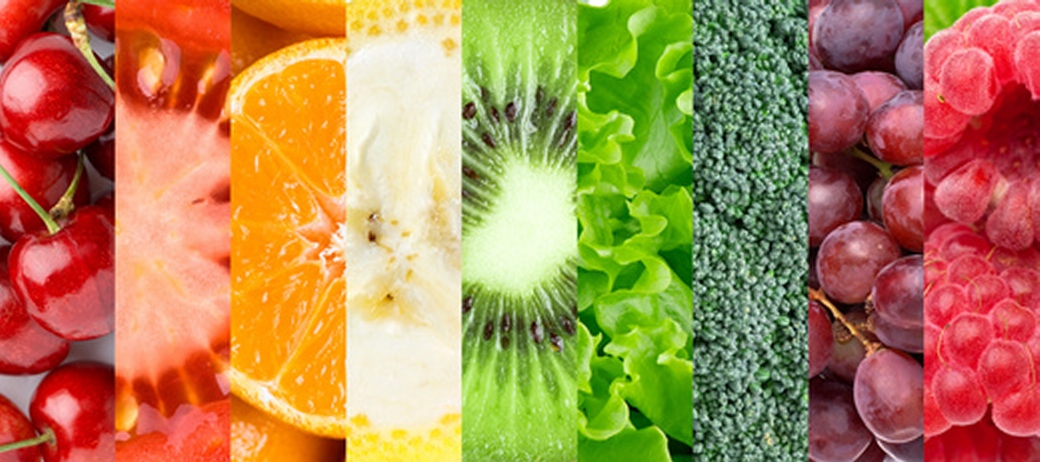
The committee recognizes that access to food is a major consideration and that ‘a sustainable diet ensures this access for both the current population and future generations.’ It is good to see that research-based strategies for producing enough food to feed our growing population healthfully and sustainably are beginning to get the attention of US policy makers. Intake of animal-based foods in the US is currently higher than the suggested plant-focused dietary patterns suggested by the committee. The committee is not necessarily asking people to completely give up any particular type of food, but rather to have a dietary emphasis on whole plant foods for both health and sustainability reasons.
It will be interesting to see the extent to which these plant-focused recommendations by the DGAC are reflected in the final Dietary Guidelines for Americans 2015. Regardless of the special interests that may have influence over the final document, I am happy to see that the DGAC makes their recommendations based on sound research and recognizes that the most health promoting diet is also the most environmentally sustainable. I am also pleased to see that the suggestions advocated by the committee are more aligned than ever with the information we teach in our online Mastering Raw Food Nutrition and Educator Course. For more class details, click here.
References and Research
Scientific Report of the 2015 Dietary Guidelines Advisory Committee:
http://www.health.gov/dietaryguidelines/2015-scientific-report/02-executive-summary.asp
http://www.health.gov/dietaryguidelines/2015-scientific-report/
One of the best ways to keep in touch with us is to join our email list. You’ll receive a free copy of Our Top 12 Strategies for Long Term Success on A Raw Plant-Based Diet eBook along with regular information about raw food and plant-based diets and periodic promotions for our classes, events, and other offerings!
5 Great Reasons to Add More Fruits and Vegetables to Your Diet
Raw fruits and vegetables are well-known for their health promoting benefits, so much that the current USDA MyPlate suggests that half of our diet be composed of fruits and vegetables. Here are many of the reasons why:
Vitamins
Fruits and vegetables contain many important and synergistic vitamins. Good examples include vitamins C and E. Many fruits and vegetables are excellent sources of vitamin C, including red bell peppers, strawberries, broccoli, cauliflower, papaya, lemons, tomatoes, cantaloupe, and of course, oranges. Leafy greens are rich in both vitamin C and vitamin E, and great sources include romaine lettuce, kale, mustard greens, dandelion greens, and collard greens.
Minerals
Bananas are famous for their potassium content, but fruits in general are great potassium sources. Dates, durian, apricots, honeydew melon, tangerines, oranges, peaches, nectarines, and mangoes are especially high in potassium.
Where do you get your calcium? Where do you get your iron? Many leafy greens can be rich sources of these important minerals, including kale, bok choy, dandelion greens, and even lettuce when eaten in quantity. Three cups of kale or dandelion greens provide over one quarter of the daily value for calcium and notable amounts of iron. A little-known fact is that some fruits can be notable sources of these two minerals as well. For example, only two valencia oranges or 5 figs provide 10% of the daily value for calcium. When eaten in greater quantities than this, as many raw food enthusiasts do, the calcium content can really add up. In regard to iron, although not as rich as leafy greens, mulberries, blackberries, and raspberries when eaten in quantity can provide notable amounts of this important mineral.
Phytonutrients
Plant foods in their fresh, raw state contain numerous phytonutrients, many of which can act as antioxidants which help protect our cells from age accelerating free radicals. Anthocyanins are antioxidants found in blue or purple foods such as blueberries and blackberries. Isothiocyanates are antioxidants found in cabbage family plants, also known as cruciferous vegetables, including collard greens, kale, bok choy, broccoli and Napa cabbage. Lutein and zeaxanthin are yellow-colored antioxidants, and are believed to play a role in protecting the macula of our eyes from damage caused by sunlight-induced free radicals. Lutein and zeaxanthin are found in foods such as dark leafy greens and yellow-orange fruits and vegetables, such as summer squash. Additional rich food sources include kale, Swiss chard, collard greens, romaine lettuce, broccoli, red bell peppers, dandelion greens, and zucchini.
Water
Water is involved in many essential body processes and makes up a significant percentage of body weight. In some raw food menus where fruits and vegetables make up the majority of foods eaten, the water content can be close to a gallon (almost 4 liters) or more! By comparison, raw menus that focus on denser more dehydrated foods, nuts, seeds, or oils can be less than half of this amount. Standard western menus are generally lower still at about one third the quantity of a high fruit and vegetable menu, creating the need for additional water consumption to meet daily needs. Unlike plastic water bottles, fruits and vegetables provide an abundance of healthy water in biodegradable containers!
Fiber
Dietary fiber is the indigestible portion of plant matter that is often referred to as roughage. Fiber plays critically important roles in various aspects of intestinal health, blood sugar and cholesterol regulation, and other important health benefits. Fiber keeps food moving though the intestines. It can help carbohydrates be digested more slowly, which in turn helps to stabilize blood sugar levels. It can bind to excess cholesterol in the digestive tract, helping keep blood cholesterol levels at an appropriate level. Fiber also plays a very important role in maintaining the health of the all-important human microbiome, as it provides food for healthy probiotic bacteria.
And the list goes on…
This is just the beginning! There are so many other reasons to include more fruits and vegetables in one’s diet and we are happy to see that the USDA now emphasizes the importance of these foods to the American public more than ever before.
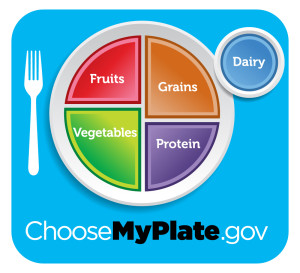
Posted in accordance with USDA MyPlate icon usage guidelines: The USDA does not endorse any products, services, or organizations.
One of the best ways to keep in touch with us is to join our email list. You’ll receive a free copy of Our Top 12 Strategies for Long Term Success on A Raw Plant-Based Diet eBook along with regular information about raw food and plant-based diets and periodic promotions for our classes, events, and other offerings!
How can folate mask a vitamin B12 deficiency?
This pathway is a little biochemically-intense, so I encourage you to watch the video first and then read the text below for clarification.
Vitamin B12 converts homocysteine to methionine by transferring methyl groups from 5-methyl tetrahydrofolate to homocysteine.
In a vitamin B12 deficiency, we often see elevated homocysteine levels, because vitamin B12 is not available to transform homocysteine into methionine. So, homocysteine levels increase.
In a vitamin B12 deficiency we can also see large red blood cells, referred to as macrocytic anemia, because vitamin B12 is not available to convert 5-methyl tetrahydrofolate back into folate. This is called the "methyl folate trap", where folate is "trapped" in the form of 5-methyl tetrahydrofolate. Folate is used to create red blood cells and DNA, and when there isn't enough folate available, red blood cells do not fully mature and stay large. On a lower folate diet, such as with many versions of the standard western diet, we tend to see this situation.
However, when someone with a vitamin B12 deficiency eats a higher folate diet, such as on a plant-based diet, there is a constant supply of folate to create red blood cells and DNA, so red blood cells may appear normal in size. This is how folate can mask a vitamin B12 deficiency. In other words, one needs look beyond the size of red blood cells when testing for vitamin B12 deficiency, and employ other reliable vitamin B12 tests. Accurate vitamin B12 testing by a knowledgeable, licensed clinician is essential for determining one's vitamin B12 status.
If you're interested in taking your knowledge to the next level.........
We cover this topic and so much more in our online Mastering Raw Food Nutrition and Educator Course. For more class details, click here.
One of the best ways to keep in touch with us is to join our email list. You’ll receive a free copy of Our Top 12 Strategies for Long Term Success on A Raw Plant-Based Diet eBook along with regular information about raw food and plant-based diets and periodic promotions for our classes, events, and other offerings!
What is methylmalonic acid and how does it relate to vitamin B12?
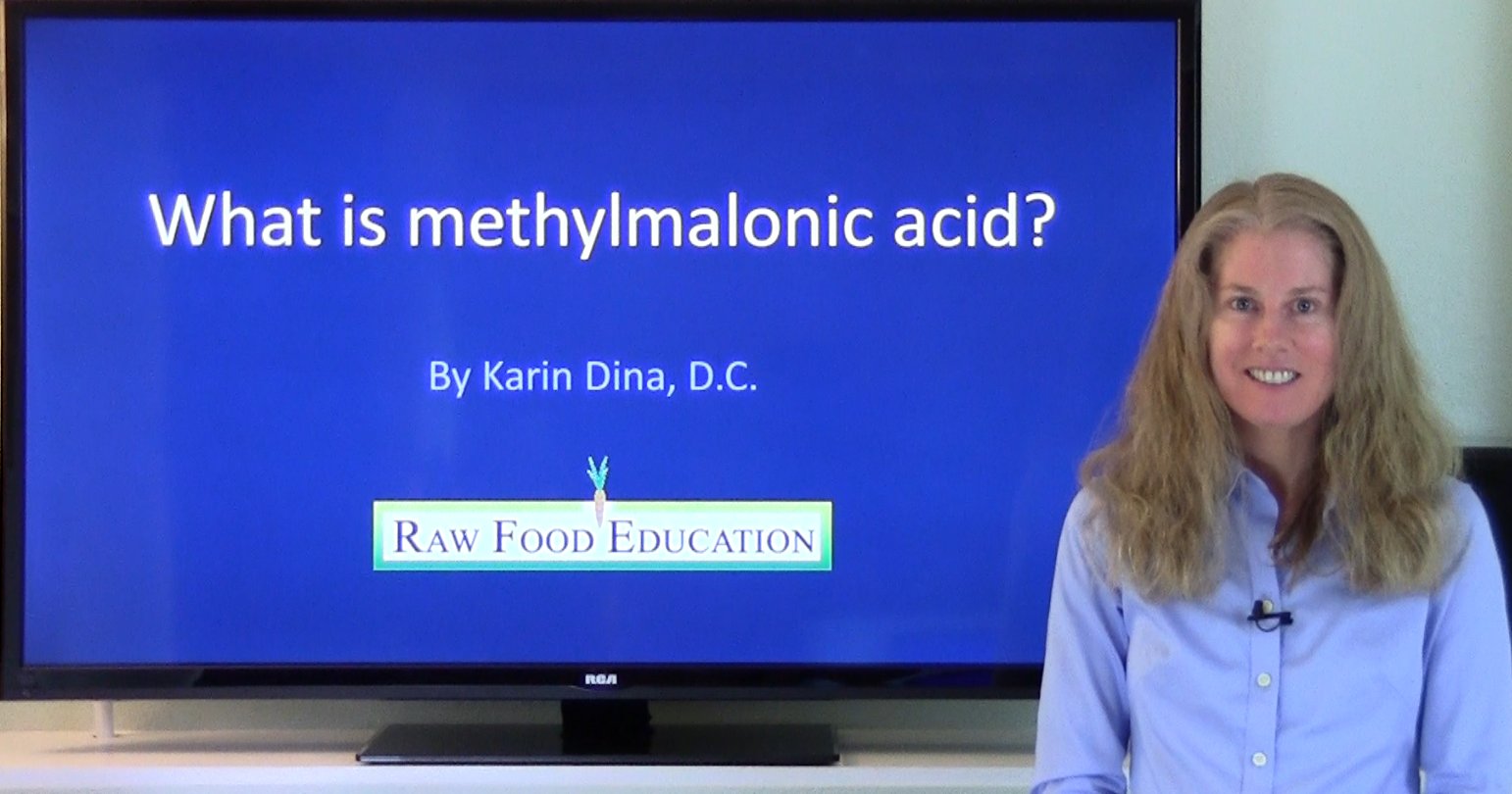 Methylmalonic acid (MMA) is a popular vitamin B12 test.
Methylmalonic acid (MMA) is a popular vitamin B12 test.
But what actually is MMA and where does it come from? In the human body, MMA is a breakdown product or byproduct of protein, carbohydrate, and cholesterol metabolism. In other words, when a variety of proteins, fatty acids, and cholesterol are used to create energy, one of the byproducts is methylmalonic acid.
The specifics of this energy producing pathway are described as follows: In the creation of energy, the amino acids valine, isoleucine, methionine, threonine, odd-chain fatty acids, and cholesterol all go through a variety of metabolic processes to be converted into a substance called propionyl CoA. Propionyl Co-A is then converted into methylmalonyl CoA. When we are in good human bioactive B12 status, methylmalonyl CoA is then converted into succinyl CoA by an enzymatic reaction in which vitamin B12 is a co-factor. In other words, vitamin B12 is essential for the conversion of methylmalonyl CoA into succinyl CoA.
Succinyl CoA is an intermediate in the Kreb’s Cycle (also known as the TCA cycle), which is involved in energy production. We now see how vitamin B12 plays a role in energy production in our body.
What happens when someone becomes B12 deficient? The pathway that converts methylmalonyl CoA into succinyl CoA becomes de-emphasized and the amount of methylmalonyl CoA starts to increase. As this amount increases, methylmalonyl CoA is converted into methylmalonic acid. Methylmalonic acid does not have any specific function in the body, so it is eliminated from the body by the urinary tract. When one is deficient in vitamin B12, their blood and urine generally have elevated levels of methylmalonic acid.
Vitamin B12 is very important for this pathway and many other reactions throughout the body. The bottom line is that it is a good idea to know our vitamin B12 status, which we can achieve through reliable B12 testing.
We cover the importance of vitamin B12, reliable testing, and reliable sources in our book, The Raw Food Nutrition Handbook, An Essential Guide to Understanding Raw Food Diets. If you are interested in our lab testing and nutrition consulting services, please visit www.rawfoodconsulting.com.
This video explains how and why methylmalonic acid can be created in the human body:
One of the best ways to keep in touch with us is to join our email list. You’ll receive a free copy of Our Top 12 Strategies for Long Term Success on A Raw Plant-Based Diet eBook along with regular information about raw food and plant-based diets and periodic promotions for our classes, events, and other offerings!
The Protein Content of Various Types of Sprouts
Are sprouts as rich in protein as they are rumored to be? How does the protein content of different types of sprouts compare? This video gives a good summary of available information:
One of the best ways to keep in touch with us is to join our email list. You’ll receive a free copy of Our Top 12 Strategies for Long Term Success on A Raw Plant-Based Diet eBook along with regular information about raw food and plant-based diets and periodic promotions for our classes, events, and other offerings!
Where do you get your protein on a raw plant- based vegan diet? A simple answer.
From our experience, this is by far one of the most commonly asked questions of people on raw or plant-based diets. The answer is fortunately quite simple: all plants contain protein. This may come as a surprise for some given that meat is commonly thought to be the sole or main source of protein in food.
Because all plants contain protein, all whole natural plant foods contain protein. Here is a summary of the protein content in a variety of plant foods found on a plant-based diet:
| Type of Food | Carbohydrate | Protein | Fat |
| Sweet Fruit | 89% | 6% | 5% |
| Vegetables | 73% | 18% | 9% |
| Nuts and Seeds | 16% | 11% | 73% |
| Avocados | 19% | 5% | 76% |
| Coconuts | 17% | 4% | 79% |
| Legumes | 66% | 30% | 4% |
| Grains | 80% | 12% | 8% |
| Pseudograins | 71% | 15% | 14% |
| Yams | 92% | 7% | 1% |
| Spirulina | 26% | 64% | 10% |
| Oil | 0 | 0 | 100% |
This chart shows the macronutrient (carbohydrate, protein, and fat) averages in a variety of types of foods as a percentage of calories. Some people may think that fruit does not contain protein, but as we can see, about 6% of the calories in fruit come from protein. Vegetables are higher in protein than fruit and nuts and seeds.
Even coconuts and avocados that are known for their high fat content contain some protein. Legumes are high in protein and low in fat, and can be considered a lean source of protein. In general, pseudograins are higher in protein than grains. True grains are found in the grain or grass family, known as the Poaceae, while pseudograins or pseudocereals including quinoa, amaranth, and buckwheat and are not members of the grain family. Quinoa and amaranth are found in the amaranth plant family (Amaranthaceae) and buckwheat is found in the Polygonaceae plant family.
Yams are well-known for their carbohydrate content and contain 7% of the calories from protein. Spirulina, a cyanobacterium, is the highest of all at 64% of the calories from protein. For more information on spirulina, check out my video. All oils are 100% of the calories from fat, which is one of the many reasons that I encourage people to eat whole natural plant foods, which are some combination of carbohydrate, protein, and fat.
How does this information compare to our protein needs? The World Health Organization suggests that a protein intake of 0.8 g of protein per kilogram of body weight is estimated to cover 97.5 percent of the human population’s needs. For someone who weighs 120 lbs. this would be 44 g of protein per day or 9% of the calories on a 2000 calorie per day diet. For someone who weighs 150 lbs. this would be 54 g of protein or 10% of the calories on a 2200 calorie per day diet. Our daily diets are composed of a combination of whole plant foods that contain more protein than these respective gram measurements and average out to greater than these percentages of calories from protein. Not surprisingly, after a combined 50 + years of living this lifestyle, we feel great.
We encourage you to learn more about this fascinating and often contentious topic, so we further delve into the protein content of raw and plant-based diets in our online Mastering Raw Food Nutrition and Educator Course. For more class details, click here.
Our book The Raw Food Nutrition Handbook: An Essential Guide to Understanding Raw Food Diets addresses plant protein in greater depth and many other hot topics in raw food nutrition such as essential fats, nutrient content of raw food diets, food combining, enzymes, hydration, vitamins, minerals, and many more. We value education on these important topics and are happy to finally bring this book to you. The book is available on Amazon and other online booksellers.
https://www.youtube.com/watch?v=UOlbU1vj9ms&feature=youtu.be
One of the best ways to keep in touch with us is to join our email list. You’ll receive a free copy of Our Top 12 Strategies for Long Term Success on A Raw Plant-Based Diet eBook along with regular information about raw food and plant-based diets and periodic promotions for our classes, events, and other offerings!
Can fruit make a meaningful iron contribution to a raw plant-based diet?
One of the best ways to keep in touch with us is to join our email list. You’ll receive a free copy of Our Top 12 Strategies for Long Term Success on A Raw Plant-Based Diet eBook along with regular information about raw food and plant-based diets and periodic promotions for our classes, events, and other offerings!
Produce Tip #2: How to Revitalize Wilted Leafy Greens
Got wilted greens? Don't compost them, rehydrate them! This simple, short video shows how our wilted collard greens regained their turgor:
One of the best ways to keep in touch with us is to join our email list. You’ll receive a free copy of Our Top 12 Strategies for Long Term Success on A Raw Plant-Based Diet eBook along with regular information about raw food and plant-based diets and periodic promotions for our classes, events, and other offerings!
Late Summer and Early Fall Fruit Sampler: Blackberries and Figs
In our neighborhood here in northern California, there are many places where we can forage wild blackberries from late summer into fall. When I go out to harvest wild blackberries I am reminded to be mindful of the thorns that these plants have on their stems and leaves. Blackberries are in the rose family, so it is not surprising to find thorns on these plants. Here is a nutrient analysis of one cup of blackberries (144 g):
| Blackberries – 1 cup | Adult Daily Requirements | |
| Calories | 62 | varies |
| Calcium | 42 | 1000 mg, 1200 mg |
| Iron | 0.9 | 8 mg for men and postmenopausal women, 18 mg for premenopausal women |
| Magnesium | 29 | 310 – 320 mg for women, 400 – 420 mg for men |
| Potassium | 233 | 4,700 mg |
| Zinc | 0.8 | 8 mg for women, 11 mg for men |
In reality, I eat more than one cup of blackberries in one sitting, so here is a nutrient analysis of 3½ cups of blackberries (504 g):
| Blackberries – 3½ cups | Adult Daily Requirements | |
| Calories | 217 | varies |
| Calcium | 246 | 1000 mg, 1200 mg |
| Iron | 3.1 | 8 mg for men and postmenopausal women, 18 mg for premenopausal women |
| Magnesium | 101 | 310 – 320 mg for women, 400 – 420 mg for men |
| Potassium | 816 | 4,700 mg |
| Zinc | 2.7 | 8 mg for women, 11 mg for men |
Often, people in the raw food community ask me if fruits are good source of minerals. The answer is that it depends on the fruit and how much one is eating of that fruit. As we can see, blackberries eaten in quantity can be a significant source of the minerals stated in the table above.
Not only can blackberries be a good source of certain important minerals, they are also well known for being a good source of antioxidants. Antioxidants are molecules that can neutralize free radicals before they cause damage to our cells.
A 2006 study measured the antioxidant content of over 1,000 foods and listed the 50 with the highest antioxidant content per 100 grams. Blackberries are number 19 on the list with 3.99 mmol antioxidants per 100 g. Foods that were higher than blackberries include ground cloves, oregano, ginger, cinnamon, turmeric, walnuts, basil, and others. For a full list please watch the video associated with this blog post or view the study listed in the reference section.
There is a challenge with measuring the antioxidant content of foods per 100 grams, given that one must consider how much of these foods one would actually eat in one sitting. Does it make sense that someone is going to eat 100 grams of cloves in one sitting? No, usually when one adds cloves to a recipe, the amount is usually around 1 teaspoon (2.1 grams) or a similar amount. However, it does make sense that one would eat 100 grams of blackberries (a little less than ¾ cup) or much more as mentioned earlier. When antioxidant content was measured per serving size, blackberries topped the list at 5.75 mmol antioxidants per cup, followed by walnuts, strawberries, artichokes, cranberries, and others. Ground cloves were further down on the list at number 10 with 2.64 mmol of antioxidants per teaspoon. Per serving, blackberries had the highest in antioxidants per serving than all other foods tested, which would include other high antioxidant berries like blueberries and raspberries.
What are some of the antioxidants found in blackberries? One type is anthocyanins, which are famous for their blue coloring. Other examples of anthocyanin containing foods include blueberries and raspberries.
Here is a video explaining this information with some added facts on the nutrient content of figs:
References:
Halvorsen BL, Carlsen MH, Phillips KM, Bøhn SK, Holte K, Jacobs DR Jr, Blomhoff R. Content of redox-active compounds (ie, antioxidants) in foods consumed in the United States. Am J Clin Nutr. 2006 Jul;84(1):95-135.
Nutrient content of blackberries: USDA nutrient database
But isn’t fruit controversial for some reason?
To make it easy for people to find reliable information on fruit, the glycemic index, glycemic load, fructose, glucose, and carbohydrates in general, we dedicated a chapter in our book, The Raw Food Nutrition Handbook: An Essential Guide to Understanding Raw Food Diets to answering many common carbohydrate questions.
In the book we also cover other hot topics in raw food nutrition such as essential fats, protein, nutrient content of raw food diets, food combining, enzymes, hydration, vitamins, minerals, and many more. We value education on these important topics and are happy to finally bring this book to you. The book is available on Amazon and other online booksellers.
One of the best ways to keep in touch with us is to join our email list. You’ll receive a free copy of Our Top 12 Strategies for Long Term Success on A Raw Plant-Based Diet eBook along with regular information about raw food and plant-based diets and periodic promotions for our classes, events, and other offerings!
My Top Five Favorite Leafy Greens
One of the best ways to keep in touch with us is to join our email list. You’ll receive a free copy of Our Top 12 Strategies for Long Term Success on A Raw Plant-Based Diet eBook along with regular information about raw food and plant-based diets and periodic promotions for our classes, events, and other offerings!
Spirulina and Chlorella: What are they?
- Are they plants?
- Are they animals?
- What are they exactly?
To get a better understanding about spirulina and chlorella, let’s examine the five kingdoms of life:
- Plantae – the plant kingdom
- Animalia – the animal kingdom
- Fungi – the fungus kingdom
- Protista – the protist kingdom
- Monera – the single-celled organism kingdom or the bacteria kingdom
All living organisms on this planet are grouped into one of these five kingdoms.
Spirulina
Spirulina has been classified as a type of cyanobacteria. Cyanobacteria are single-celled organisms with a chloroplast, conferring photosynthetic ability. Photosynthesis is the process by which an organism creates its own food from sunlight. The chloroplasts in spirulina give it a blue-green coloring, which is why spirulina is often informally referred to as a “blue-green algae”. It’s not actually an algae, it’s a type of bacteria.
There are two species of spirulina available as products:
- Arthrospira platensis – formerly known as spirulina platensis
- Arthrospira maxima – formerly known as spirulina maxima
Given that spirulina is a type of cyanobacteria, it is found in the bacteria kingdom.
There are many species of chlorella all of which have been classified as green algae. Historically, most types of algae have been grouped in the plant kingdom, however, some species of algae including chlorella are considered to be structurally simpler and smaller than plants. Because chlorella is such a small algae, there are some researchers that would like to have it classified as a protist. At this time, there is some controversy as to whether or not chlorella is a plant or a protist.
Let’s take a closer look at what a protist actually is. Is a protist an animal? No, animals are grouped in a separate kingdom of their own. Protists are multicellular, they have many cells, so they are not bacteria. Protists are not as complex and have a simpler cellular organization than plants, animals, or fungi, which is one of the reasons why protists have their own separate kingdom. Protists generally live in water examples of which include simpler algaes and other types of microscopic organisms. Although its classification is a work in progress, chlorella clearly has never been classified as animal, only a plant or protist.
For comparison, let’s consider krill. How does krill compare to chlorella? Krill is known for its omega-3 fat content, specifically DHA. Krill has been classified in the animal kingdom because it has a nervous system, digestive system, eyes, and other structures and functions in common with animals. Krill is a small animal at 5 cm in length. By contrast, chlorella is 0.0005 cm in diameter and spirulina is 0.0005 cm long, both being much smaller than krill.
In summary, spirulina is a type of cyanobacteria classified in the bacteria kingdom, while chlorella is a type of algae that has been historically considered in either the plant kingdom or the protist kingdom. Clearly neither spirulina nor chlorella has ever been grouped in the animal kingdom.
Interested in taking your nutrition knowledge to the next level?
We cover this topic and so much more in our online Mastering Raw Food Nutrition and Educator Course. For more class details, click here.
Additionally, our book The Raw Food Nutrition Handbook: An Essential Guide to Understanding Raw Food Diets addresses many hot topics in raw food nutrition such as essential fats, protein, nutrient content of raw food diets, food combining, enzymes, hydration, vitamins, minerals, and many more. We value education on these important topics and are happy to finally bring this book to you. The book is available on Amazon and other online booksellers.
One of the best ways to keep in touch with us is to join our email list. You’ll receive a free copy of Our Top 12 Strategies for Long Term Success on A Raw Plant-Based Diet eBook along with regular information about raw food and plant-based diets and periodic promotions for our classes, events, and other offerings!
What is so great about dandelion greens?
One of the best ways to keep in touch with us is to join our email list. You’ll receive a free copy of Our Top 12 Strategies for Long Term Success on A Raw Plant-Based Diet eBook along with regular information about raw food and plant-based diets and periodic promotions for our classes, events, and other offerings!
How do you know if a food contains gluten?
One of the best ways to keep in touch with us is to join our email list. You’ll receive a free copy of Our Top 12 Strategies for Long Term Success on A Raw Plant-Based Diet eBook along with regular information about raw food and plant-based diets and periodic promotions for our classes, events, and other offerings!

